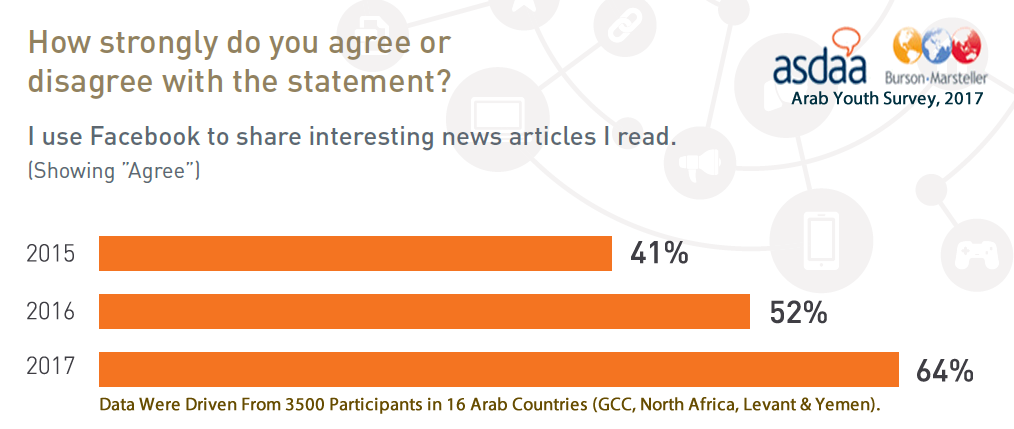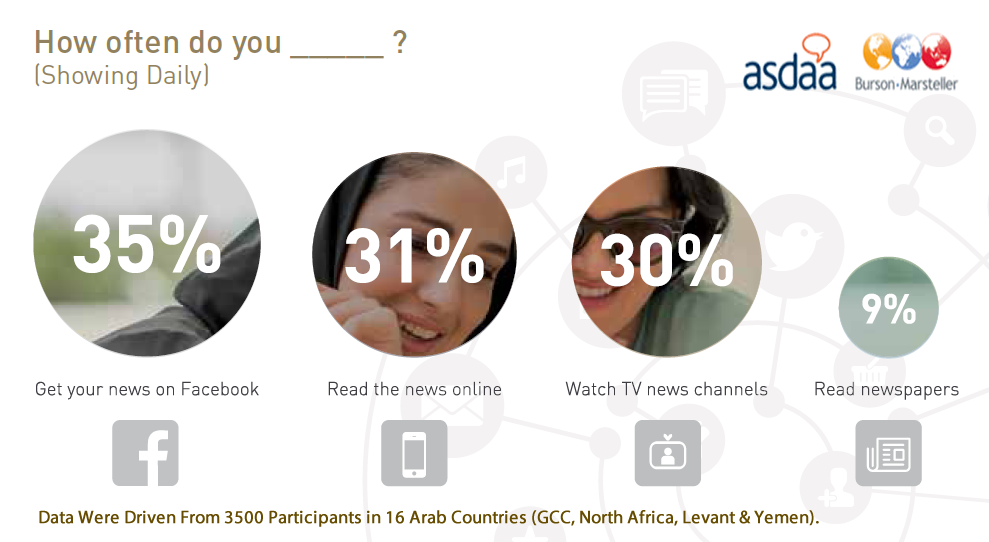Guides
Infographic: Why Your Business Needs to Use Instagram | Gramlike
People remember 80% of what they see, 20% of what they read, and 10% of what they hear. So, it’s no wonder that Instagram is a popular social media platform, and not just for consumers but for brands as well. Check out the below insights on Instagram, how brands are using it and what they’re …
Indicators
YouTube & Facebook Are the Most Visited Social Platforms by Beauty Fans, 2017 | GlobalWebIndex
Beauty fans are defined as internet users who have a strong interest in beauty products and aged between 16-64 years. The regular users are defined as those who use each brand’s products weekly or more. YouTube & Facebook are the most visited social platforms by the beauty fans- during the month previous the survey – …
Indicators
64% of Arab Youth Use Facebook to Share News, 2017 | ASDA’A Burson-Marsteller
Facebook is the most popular social media platform in the whole Arab countries, especially among young Arabs. In 2017, 64% of Arab youth use Facebook to share interesting news articles they read, with an increased rate 12% than 2016.
Indicators
Facebook Is the Top Used Medium for Daily News Among Young Arabs, 2017 | ASDA’A Burson-Marsteller
Social media nowadays has an essential role in making young Arabs people informed with the daily news. Facebook is the main daily news source for 35% of them, while 31% use other online news sources, and 30% use TV news channels.
Guides
A Brand’s Guide to Understanding and Using Image Analysis | Crimson Hexagon
Images are more impactful than text, more memorable, more engaging and more likely to be shared and re-shared. There are well over 3 billion photos shared daily on social media. The fastest growing social media platforms are image-based: Snapchat, Instagram, Pinterest and Tumblr, even the original social networks like twitter and facebook now focus much …
Indicators
Facebook Daily Active Users Increased to 1,284 Million Users in Q1 2017 | Facebook
Facebook added enormous monthly users in the first few months of this year. The Facebook daily active users reached 1,284 billion users in the first quarter of 2017 compared to 1,227 billion users in 2016 and this number might hit 2 billion total users in Q2.
Indicators
WhatsApp & Facebook Are Equally Topping the List of Most Platforms Used During Ramadan 2017 | Effective Measure
Social networking leads the online activities that will behold an increase during Ramadan. WhatsApp and Facebook rank the same place at the top of most online platforms used during the holy month. In contrast, LinkedIn, MSN, Skype, and Pinterest are equally rank the lowest rates.
Indicators
Websites & Social Media Are the Most Used Marketing Assets in Small Businesses in US, 2017 | Drip
Most businesses are owning websites (71.2%) and social media accounts (67.8%) as marketing assets, while the minority of small business are using other marketing assets like digital ads (27.7%), offline ads (26.4%), landing pages (23.2%) and a blog (21.9%). 10% of the US marketers aren’t using any of the above marketing assets. These rates were observed from a survey directed …







